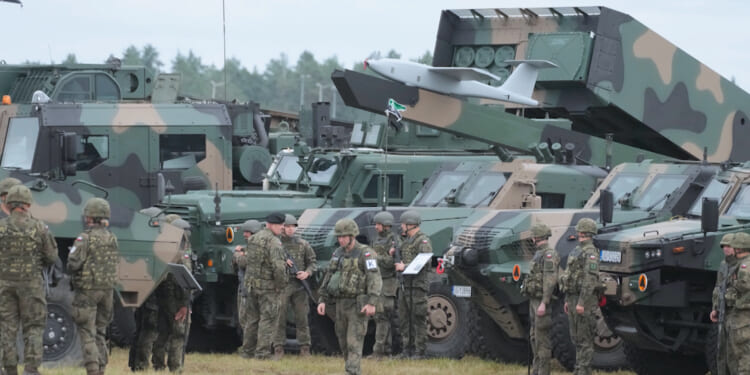WARSAW, Poland – From Lithuania to Poland, countries along NATO’s eastern flank are on edge. Moscow’s recent flying of drones across borders is pushing tensions to their highest point in years.
Across Lithuania, fears of a Russian strike aren’t just headlines, they’re real concerns shaping daily life.
At an after-school drone course, 11-year-old Emilis Benko is learning how to build, program, and fly one. “It’s basically a drone simulation where you can go to single player or multiplayer,” explained Benko.
In recent months, Lithuania and its Baltic neighbors, Estonia and Latvia, have reported a sharp rise in Russian drone activity, sometimes inside their airspace.
Lithuania sits just miles from the Russian border. This has led the small country to begin public defense programs like this as part of a broader push to prepare for any crisis.
“We develop, kind of a strategy how we are preparing our citizens militarily and how we’re preparing all the rest of the citizens to build the resilience of our population,” said Vice President Tomas Godliauskas of Lithuania’s National Defense.
And it’s not just the Baltics feeling the pressure.
Russian drones have also crossed into Polish, German, Danish, and even Belgian airspace.
In September, 20 Russian drones entered Poland, prompting officials to temporarily shut down the main airports.
To counter the threat, Poland and Romania are using an American-made anti-drone system.
***Please sign up for CBN Newsletters and download the CBN News app to ensure you receive the latest updates.***
“The American Merops system being used in Poland and Romania is cheaper than deploying a fighter pilot and uses drones to attack drones. It has been tested in Ukraine, is small enough to fit in the back of a pickup truck, and can accurately detect drones and counter them using AI to navigate when communications are jammed,” said Emma Burrows with The Associated Press.
As Vladimir Putin ramps up his hybrid warfare, many in Poland quietly worry about the unthinkable: war with Russia.
“I’ve seen some reports that our army is not doing great and that if there was a war it wouldn’t take that much time for Russia to take over some of our land,” said a resident of Warsaw.
In recent months, thousands of Poles here in Warsaw have signed up for military training. The government aims to create an Israel-style reserve force numbering some 500,000.
“I’ve recently been participating in a public debate on what happens and what I would do as a citizen, whether I would run away or I would stay and fight, and I have to admit that I don’t know what I’m going to do,” said another resident of Poland’s capital city.
In September, 30,000 Polish and NATO troops took part in one of the largest military drills in the country’s history.
The exercise unfolded less than 60 miles from the Suwałki Gap, a narrow stretch connecting the Baltic states to the rest of NATO.
Experts say if Russia ever attacks, this could be one of its first targets.
“The importance and strategic significance of the Suwalki Corridor is undeniable,” said Gitanas Nausėda, President of Lithuania.
Last month, a new highway opened linking the Baltic states to Poland.
It cuts right through the Suwałki Gap, between Belarus and Russia’s Kaliningrad enclave.
“It is a very important artery not only for the movement of goods and people, but also for military mobility,” noted Nausėda.
With Russian drones testing NATO’s borders and tensions rising across Europe, one question looms large: not if the alliance is ready, but how soon it may have to prove it.

















